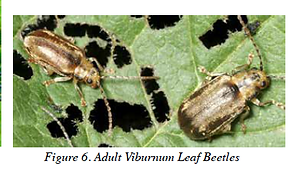
Gardening Issues
Climate Change in Illinois: What it Means for Horticulture
and
The Role of the Gardener
by
Trent Ford Illinois State Climatologist
Illinois State Water Survey / Prairie Research Institute
University of Illinois
Urbana - Champaign
Click below to download Dr. Trent's Presentation for our
95th Annual Convention
"Climate Change"

Hydroclimatologist, Dr. Trent Ford is the current Illinois State Climatologist, appointed August 12, 2019. A native of Roanoke, Illinois, Ford previously was an assistant professor in the Department of Geography and Environmental Resources at Southern Illinois University. In addition to teaching courses on weather, climate and society and hazardous weather, he received funding from the National Oceanic and Atmospheric Administration to research heat wave predictability and develop ways to use soil moisture data to improve drought monitoring. He earned a bachelor's degree from Illinois State University before completing his master's and PhD at Texas A&M University. The Illinois State Climatologist provides climate data, maps, and information for Illinois farmers, government agencies and policymakers, and all citizens. The State Climatologist acts as the state's authority on climate science.
Viburnum Leaf Beetle

The Viburnum Leaf Beetle, Pyrrhalta viburni, is a recently introduced pest, found in the U.S. in 1996. This insect is very destructive to primarily Viburnum species, that are an important understory of the natural and built landscape. The aesthetic damage combined with the loss of habitat and food source for wildlife is of major concern. Songbirds are especially dependent upon the fruit when other food is not available. The larvae feed extensively on the new foliage in Spring. The larvae become adults in early Summer, and then consume much of the second flush of foliage. Left uncontrolled, the beetle will kills susceptible plants after 2-3 years. Immediate recognition and natural control of this insect pest is essential for responsible stewardship. Pruning/”Trimming”should be confined to ONLY removal of deadwood and areas with egg cases, as this will attract more pests.






Jumping Worms
Jumping worms, (Amynthas spp.) have recently been discovered in Illinois. This new invasive species was first identified in Illinois in 2015 in northern Illinois and in 2016 in southern Illinois.
Jumping worms are earthworms native to East Asia. They also have been called crazy worms, Alabama jumpers, and snake worms. Jumping worms are voracious consumers of organic material, which can affect soil quality. They breed quickly and eggs survive Illinois winters. Adults reach maturity in approximately 60 days, allowing populations to grow exponentially during the growing season. These worms are also capable of reproducing without mating.
There are concerns about the effects these worms will have on forests and other natural areas as well as agricultural and landscaped areas. Populations of jumping worms have the potential to change the soil structure, deplete available nutrients, damage






